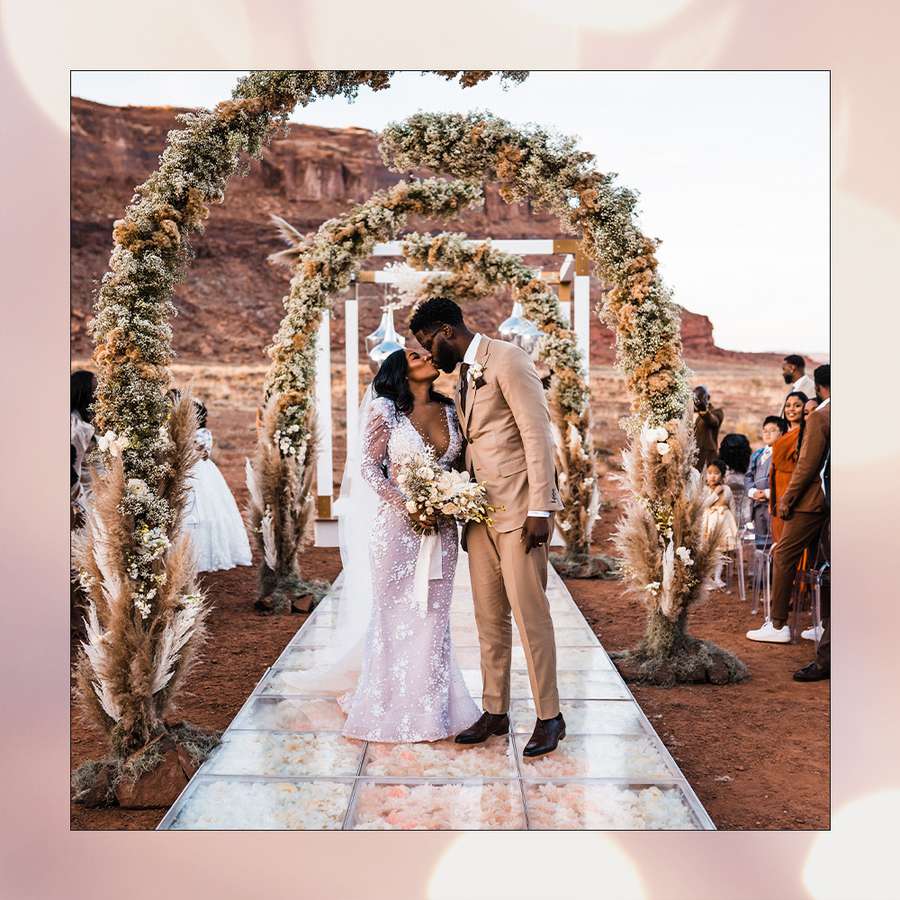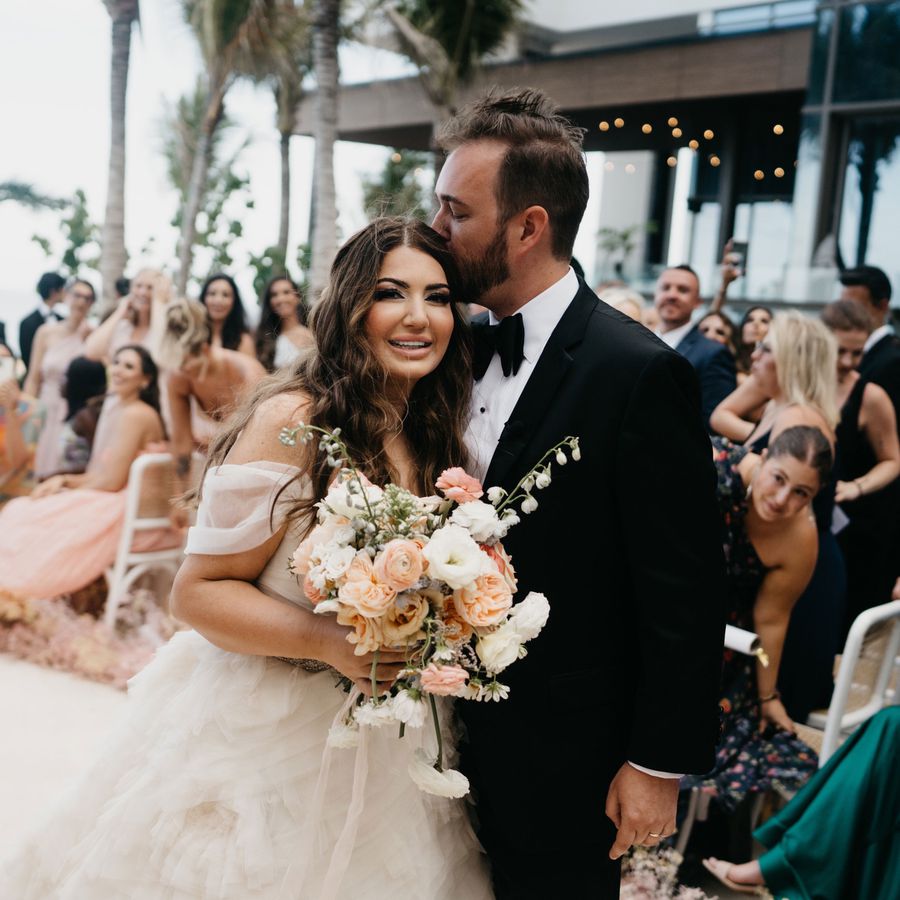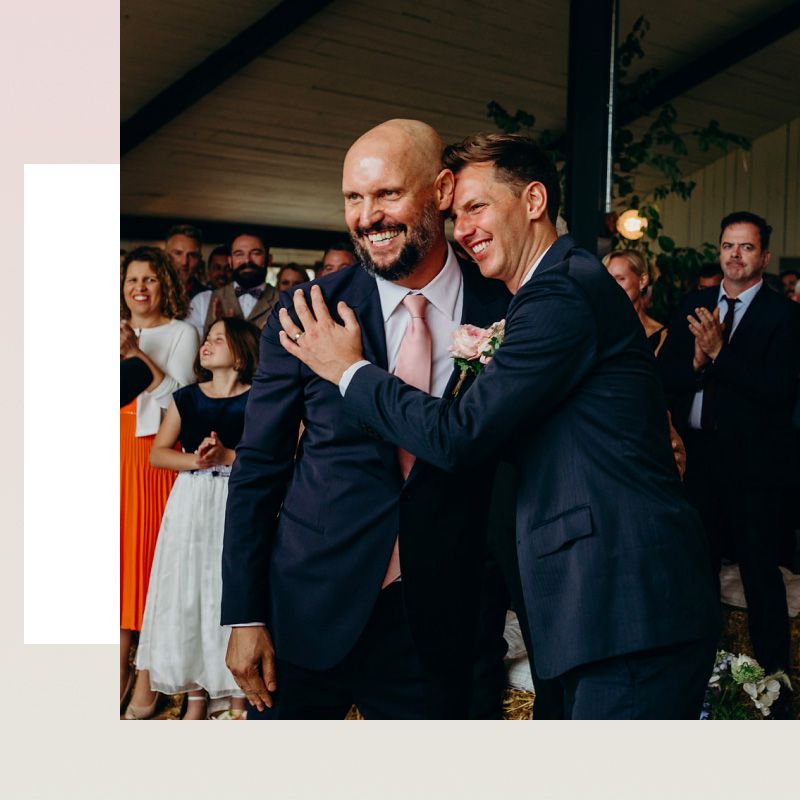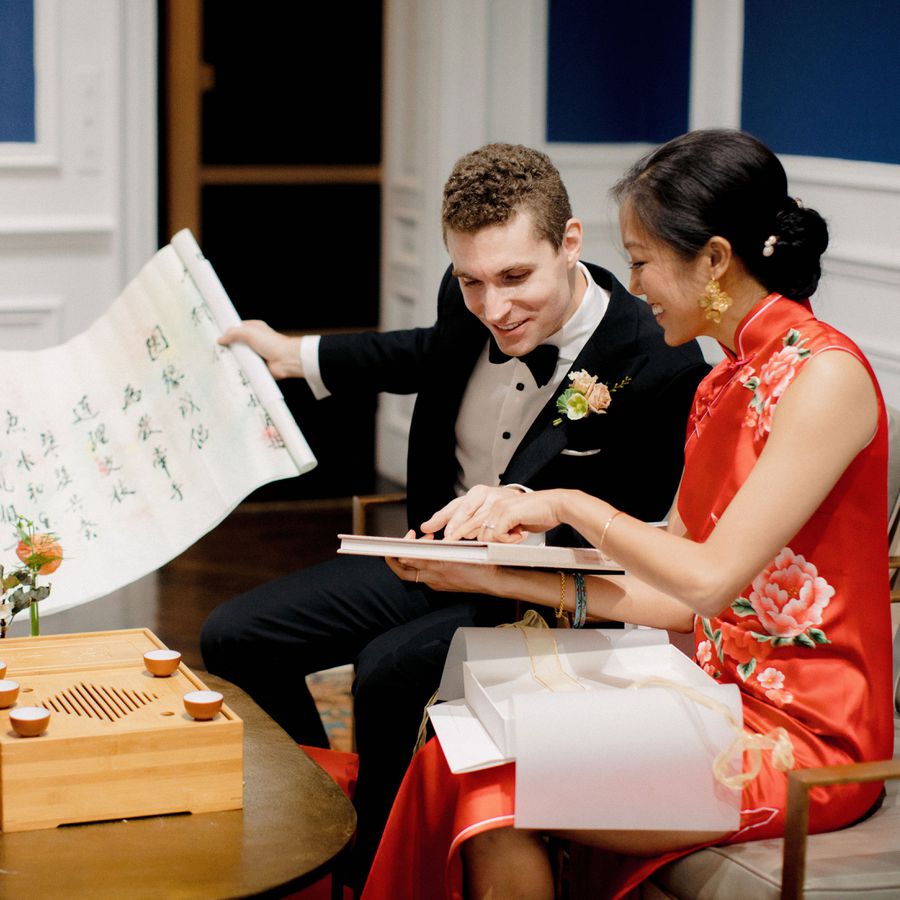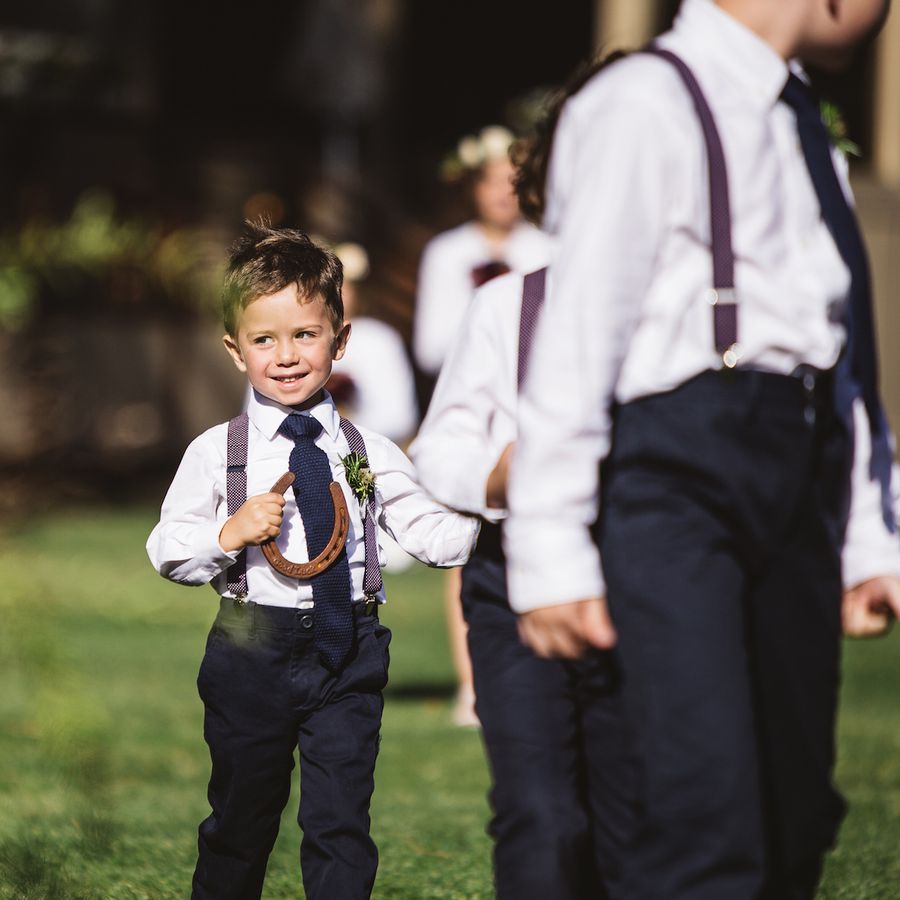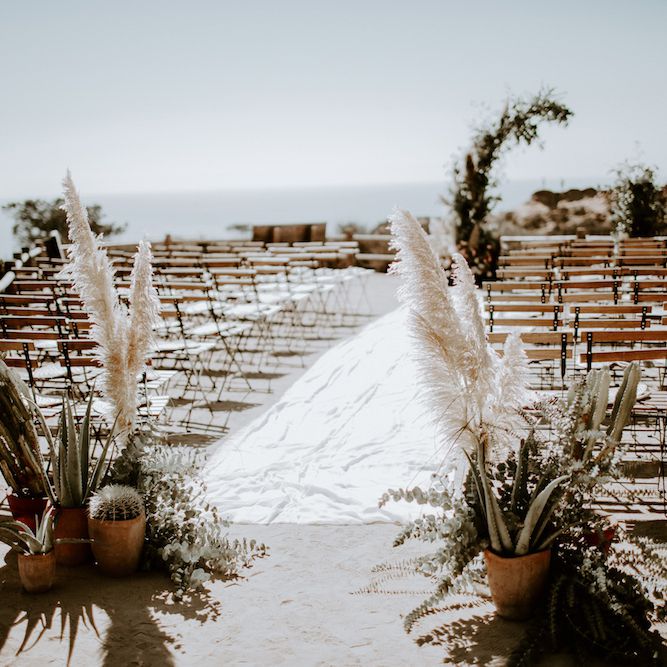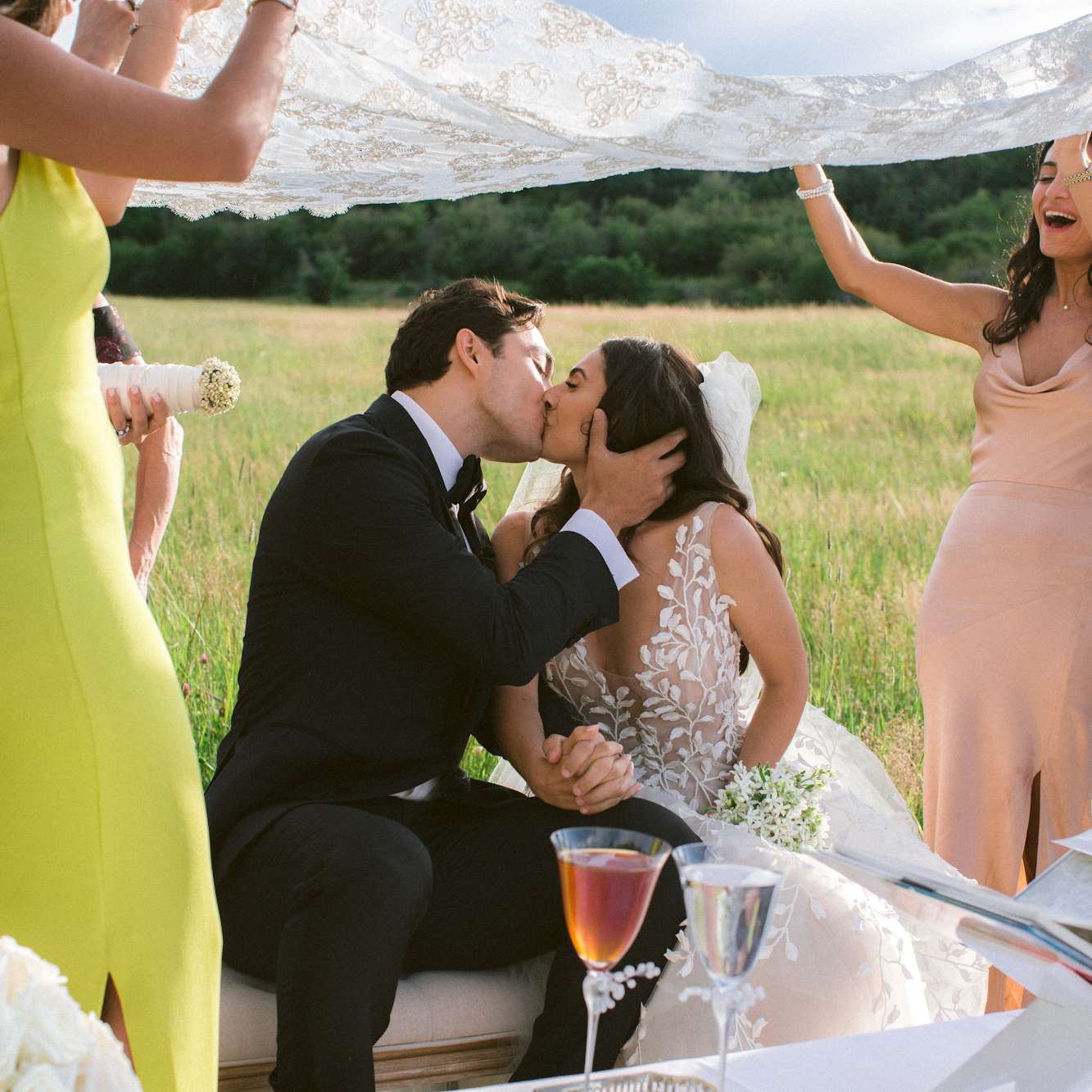
PHOTO BY CATHERINE MEAD
Marriage is undoubtedly one of the most important events for Iranian families. The aroosi (or wedding) involves an abundance of perfectly-arranged florals, elegant fruit and dessert displays, lavish décor, and a perpetually packed dance floor. If you or your spouse-to-be have Persian heritage, you might might consider incorporating some of these traditions into your own wedding celebration.
Persian weddings often entail the ancient tradition of Khastegari (or courtship). This came from origins of arranged marriages, but in modern Iran, men and women are able to date freely. Many Iranian-American weddings still maintain elements that pay homage to what's at the core of Khastegari: respect to the family.
Want to learn more about planning a Persian wedding? We asked a wedding planner Sanam Enayati to explain each tradition in detail ahead.
Meet the Expert
Sanam Enayati is a professional event planner specializing in Persian weddings. She is the co-founder of L'Amour Events and is based in Los Angeles.
Ketubah Signing
In Persian Jewish weddings, the signing of the Jewish marriage contract (or ketubah) is a ceremonial event that is led by the officiant and typically done right before the procession. The ceremony lasts about 30 minutes and has an assembly of close friends and family members—it is considered an honor to be invited to witness the couple signing their ketubah.
The contract defines the groom's duties and responsibilities to his bride as well as the rights and protection the bride holds in case of a divorce. Jewish ketubah signings only require the signature of the bride, groom, officiant, and two witnesses, however, in the Persian tradition, this is the opportunity to honor valued family members by allowing them to sign the back of the contract.
Sofreh Aghd
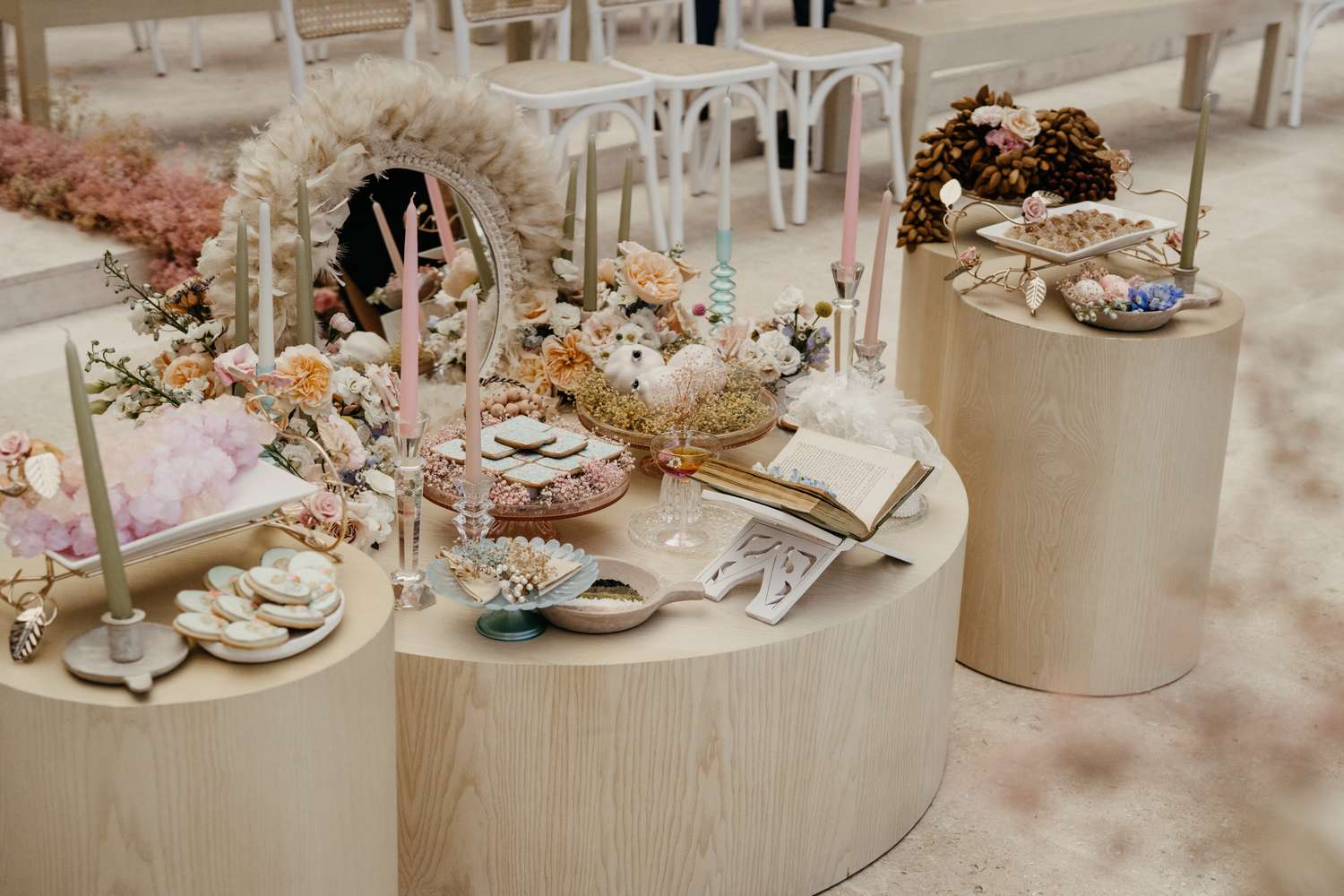
Photo by Kape Photography
The aghd is the ceremony portion of the wedding in which the bride and groom sit in front of an assorted sofreh (or table) full of items that have meanings behind them. "The sofreh aghd represents the symbolic and traditional union of the bride and groom," explains Enayati. "It is an intricate spread of items that stand for the shared journey of life and marriage the couple is about to embark on." Some of the elements you'll find on a sofreh include a mirror that signifies eternity, two candlesticks that signify light, nuts, and eggs for fertility, and coins for wealth and prosperity.
Burning Incense
:max_bytes(150000):strip_icc()/GettyImages-1147506496-fabf133a23bc499090b4b5d996284800.jpg)
Getty Images
Esfand (or incense) is a combination of spices and herbs that symbolize the unwelcoming of negative energy. Burning esfand is an important part of the Iranian culture that's meant to deter the 'evil eye' from causing any harm, particularly as one is about to embark on a new journey or milestone. At a Persian wedding, the esfand is burned just as the bride walks down the aisle. "As the flower girls are spearing the aisle with petals, someone from my team is lighting up the incense," explains Enayati. "After we walk around the bride a few times holding the esfand, we are to bring the bride out to get married."
The Procession
A traditional Persian wedding procession includes the officiant, bridesmaids, groomsmen, siblings, parents, ring bearer, flower girls, bride, and groom. "Modern traditions have transformed the old-fashioned wedding aisle," notes Enayati. "It has become customary for the bridal party to dance rather than walk down the aisle."
After all of the bridesmaids and groomsmen dance down the aisle, the groom’s parents walk halfway down the aisle and await their son’s arrival. The groom then greets his parents who guide their son to the sofreh. Next, the bride’s parents walk halfway down the aisle, with the flower girls following. Just before the bride is about to walk down the aisle, all guests rise from their seats. When the bride reaches her parents in the middle of the aisle, she first turns to her mother who lifts the veil and hugs her. The bride then turns to her father for an embrace, and he then pulls her veil back down.
It is at this time the groom meets the bride and her parents in the center of the aisle. The groom pays his respects to the bride’s parents by hugging and kissing them, and the father of the bride proceeds to place the bride's hand into the groom’s hand—this symbolizes the father giving away his daughter. The bride’s parents leave the center of the aisle where the bride and groom have their last few moments together before walking to the sofreh.
Chuppah
:max_bytes(150000):strip_icc()/Jessica-Adam_14-ea0fdbf29d4e4c60a3b575eda43e6f9f.jpg)
Photo by Rebecca Yale Photography
Canopies have served as a long-standing wedding tradition for Jewish as well as traditional Persian weddings. "In Judaism, a canopy held up at four sides is called a chuppah and is what the couple stands under as the officiant carries out the wedding ceremony," says Enayati. "In traditional Persian weddings, the canopy symbolizes unity and is customarily held by four females in the family who are close to the couple." Many couples of today are taking a modern approach and extravagantly designing their wedding canopies with luscious flowers and designs.
Consent Ritual
The consent tradition is the "I do" part of the wedding ceremony. First, the officiant asks the groom for consent and he quickly obliges. Next, the officiant asks the bride for her consent. "It is customary for the bride to be asked for her consent three times before she answers—this is to symbolize the groom’s journey of earning his wife’s love," says Enayati.
The crowd gets involved by yelling reasons why the bride can’t consent yet, such as "aroos rafteh gol behshineh!” or “the bride has gone to pick flowers." Enayati explains that the consent tradition creates excitement and anticipation in the audience until the final moment the bride finally agrees by saying “baleh!” or "yes."
Dipping Fingers in Honey
At Persian weddings, a bowl of honey is placed on the sofreh aghd signifying sweetness for the couple. After the couple has consented and they are officially married, it is customary for the groom to hold the bowl of honey as they each dip one finger (the pinky) inside and feed it to each other. This symbolizes the idea that the couple will feed each other sweetness as they begin their lives as one.
Sugar Rubbing
:max_bytes(150000):strip_icc()/mandy-brian_41-a9ef8d870b0144c38751ffa0d0bbb0a0.jpg)
Photo by Kape Photography
Sugar rubbing is a ceremony where a few special women in the couple's life spread more sweetness into their marriage. The ritual involves rubbing sugar onto a cloth held above the bride and groom's heads. Traditionally, the two to four women chosen for this ceremony are happily married women, but modern couples sometimes choose a mix of important figures in their life to take part.
Challah Blessing
:max_bytes(150000):strip_icc()/DIAMONDRAW473-e9e4f575b02e4673b5c08bcd8d337329.jpg)
PHOTO BY HARWELL PHOTOGRAPHY
At Persian Jewish weddings, the blessing of the challah bread is typically done either right before dinner is served or after the bride and groom make their grand entrance. It is a spiritual moment of the wedding reception where all guests take a seat as a short blessing is said over the challah. The challah is then cut and passed out to all of the tables of guests. It is considered an honor to be asked to perform the blessing, and the right is usually reserved for an elderly family member whom the couple chooses to give this role to.
Flower Petal Toss
Photo by Catherine Mead
Persian weddings have a tradition called gol baroon, which translates to raining flowers. This typically occurs at the end of the reception. The bride and groom stand in the middle of the dance floor with their guests circling them and throwing flower petals on them as they dance and kiss. Beautiful photos aside, the gol baroon signifies beautiful wishes for the bride and groom as the night comes to an end and they begin their life together.
